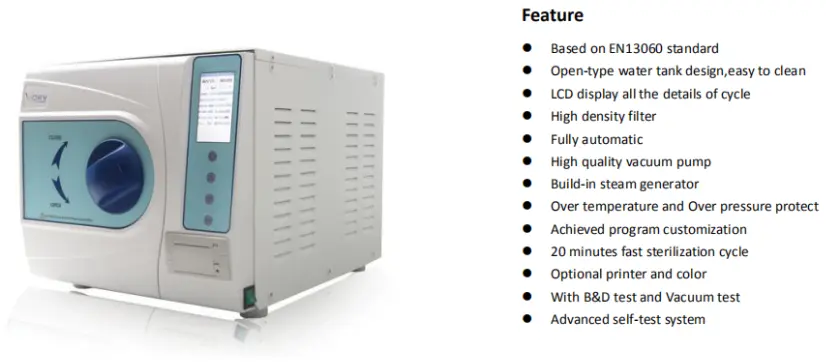How to Clean Dental Handpieces
Maintaining the hygiene and functionality of dental handpieces is crucial for any dental practice. When cleaning a dental handpiece, it is important to follow proper protocols to prevent cross-contamination and ensure equipment longevity. This comprehensive guide provides detailed instructions on how to effectively clean, disinfect, lubricate, and sterilize various types of dental handpieces, including high-speed and low-speed models, as well as the appropriate handling of lares handpiece parts. By adhering to these dental handpiece sterilization protocols, dental professionals can ensure the highest standards of patient safety and equipment care.
How to Clean Dental Handpieces
when cleaning a dental handpiece it is important to clean the outer part of the handpiece to prevent contamination of the inner side of the handpiece. First, you need to remove any dental burs from your high speed handpiece/low speed handpiece, then rinse the handpiece with procedural water for 20 seconds. Third, you use the lint-free, pre-soaked, non-protein fixing disinfection wipe to wipe down the external surface of the dental handpiece. When it is done, use the lockable transport box to transport them to the decontamination room.
Notice:
Do not put the dental handpiece submerge in water, an ultrasonic bath, or any cleaning agent.
Do not clean the Handpiece in the hand wash sink, when you rinse the handpiece with procedural water

Dental High Speed Handpiece Led
Disinfection Inside the Handpiece
After the initial external cleaning of the dental handpiece, the next crucial step is the internal disinfection process. There are two primary methods utilized for this purpose, which are detailed below.
Washer Disinfector
The washer-disinfector has proven that it is an efficient method to reduce contamination. But when you use it, a few things need to be aware of.
Notice:
You need to strictly follow the instruction of the manufacturers' guidelines because not all implant handpiece and dental handpiece are suitable for use in a washer disinfector.
You should place the dental handpiece on the handpiece stand.
Check the PH level of the detergent whether is under 10.5. If it is over 10.5, the detergent may invalidate your warranty.

Handpiece Cleaning Machines
Currently, there is all-in-one cleaning machine to improve the cleaning efficiency of the dentist.
How to Sterilize the Dental Handpiece
It's important to distinguish between sterilization and disinfection. Disinfection is the process of eliminating most pathogenic microorganisms (excluding their spores) from surfaces or objects. Sterilization, however, goes a step further by eradicating all forms of microbial life, including spores, from the dental handpiece.
The most commonly used and acceptable methods to sterilize the 4 hole high speed handpiece and low speed handpiece include chemical vapor sterilizers, dry heat, and autoclave.

How to Lubricate the Dental Handpiece
There are three effective methods for lubricating dental handpieces, including surgical straight models. The initial method involves using an aerosol spray to deliver lubricant directly to the turbine or low-speed motor components. Alternatively, a pin needle dropper can be employed for precise application of lubricant to the handpiece.
If you want to use these two methods, you need to be aware of running that handpiece after lubrication to ensure the lubricant can reach each component of the handpiece. By the way, you also need to clean the extra oil on the dental handpiece holder, to ensure the cleaning of the dental handpiece.
And, the third method is to use the automated handpiece cleaning system. Like the midwest automate handpiece maintenance system, it could do all of the cleaning work for you when you place the handpiece properly into the cleaning system.
Important Steps When Cleaning Dental Handpieces
When cleaning a dental handpiece, it is important to clean the outer part first to prevent contamination of the inner components. Follow these essential steps:
- Remove dental burs - Detach any burs from your high speed handpiece/low speed handpiece before cleaning.
- Rinse thoroughly - Rinse the handpiece with procedural water for at least 20 seconds.
- Disinfect external surfaces - Use a lint-free, pre-soaked, non-protein fixing disinfection wipe to thoroughly clean all external surfaces.
- Transport safely - Place the cleaned handpiece in a lockable transport box to transport to the decontamination room.
Notice:
Do not put the dental handpiece submerge in water, an ultrasonic bath, or any cleaning agent.
Do not clean the Handpiece in the hand wash sink, when you rinse the handpiece with procedural water
Conclusion
Proper cleaning, disinfection, and sterilization of dental handpieces are fundamental to maintaining their functionality and preventing cross-infection. When cleaning a dental handpiece, it is important to follow the systematic approach outlined in this guide, including external cleaning, internal disinfection, proper lubrication, and complete sterilization. By adhering to these dental handpiece sterilization protocols for both low speed handpiece and dental high speed handpiece led models, dental professionals can ensure optimal performance, extended equipment lifespan, and the highest standards of patient safety and infection control.
Frequently Asked Questions
When cleaning a dental handpiece, what is important to remember?
When cleaning a dental handpiece, it is important to remember several critical factors: always clean external surfaces before internal components, never submerge handpieces in liquids, follow manufacturer's specific instructions, properly lubricate after cleaning, ensure complete sterilization using appropriate methods like autoclaving, and document your sterilization process for infection control compliance.
What is the complete dental handpiece sterilization protocol?
A complete dental handpiece sterilization protocol includes: removal of burs, external cleaning, internal disinfection using approved methods, proper lubrication, sterilization via autoclave or other manufacturer-approved methods, and proper storage. This protocol must be followed between each patient to prevent cross-contamination.
How do you know if a dental handpiece is properly cleaned?
A properly cleaned dental handpiece should be visibly free of debris, function smoothly after lubrication, and show sterilization indicator changes confirming successful processing. Many practices implement tracking systems to document proper completion of all cleaning and sterilization steps.

